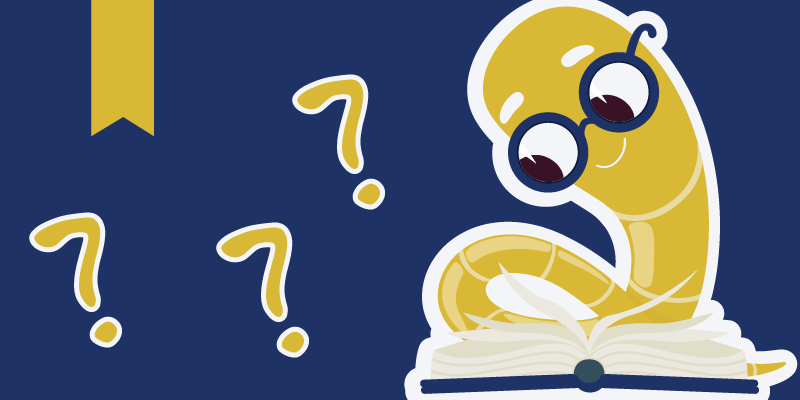


This article was written by Larry Cohen and was originally published in Bridgerama+. Click here to find out more about Bridgerama+
Am I getting older, or wiser?
I get a chuckle when people complain about getting old. “The alternative,” I tell them, “is much worse.” We are all getting older, of course, but with that is supposed to come wisdom.
In bridge, we also get wiser with age. Youthfulness is usually equated with wildness in the bidding. I used to be a reckless preempter. Now, I am more disciplined (more on that in Part II of this article). When it comes to opening the bidding, I am also moderating my ways. No, I’m not going into one of those ultra-sound shells (à la the "Roth-Stone school"). I still believe that striking the first blow is the way to go – I hope I never become a stodgy opening bidder. Still, there is room to learn. Recently, I dealt with this hand:
♠ 5
♥ QJ42
♦ AK10
♣ J10765
In the past, I wouldn’t have asked "am I vulnerable?", I wouldn’t have cared if it was matchpoints or IMPs. I would have just opened the bidding 1♣ and gone on with my life. I have 11HCP plus 1 for this, 1 for that – good enough. Alternatively, the Rule of 20 would dictate opening this hand (11HCP, 5-4 in the longest suits).
I couldn’t put this rule any better than my good friend, Marty Bergen, so I am using his writing on the topic. Of course, I have his permission to show it here – he’s proud of the rule.
What do I (Larry) think of the Rule of 20? My opinions are at the end.
The Rule of 20 (by Marty Bergen)
After teaching bridge for over twenty years, I thought
I had seen it all. However, I had the following experience in the winter of 1994, and it made a lasting impression on me. My class consisted of 28 experienced players, and I will never forget that first hand. The dealer held:
♠ KQ54
♥ A873
♦ 6
♣ K1064
I was amazed as player after player passed this hand. Only one person opened. What was going on? I immediately stopped their non-bidding and asked: "Do you open with 13 points?" Everyone answered yes. (Whew!) I now asked the $64,000 question. "How do you count your points when you pick up your cards?" Seventeen students answered that they simply counted their high card points (HCP) and added points for distribution only if they found a fit. Ten students answered that they added points for length to their HCP: 1 point for a five-card suit, 2 points for a six- card suit, etc. I am familiar with this technique, but I cannot agree with any method of evaluation that calls for passing hands like this one. The one student who opened said that she had added "short-suit points" to her HCP. 1 point for a doubleton, 2 for a singleton, and 3 for a void. With 12 HCP plus 2 points for the singleton, she was happy to open. This was the technique I learned when I took up bridge. How did I resolve the confusion? I taught them The Rule of 20.
In first and second seat, add the length of your two longest suits to your HCP. When the total is 20 or more, open the bidding. With less, do not open at the one-level. Here is how it works. It is a matter of simple addition: HCP + # cards in longest suit + # cards in second longest suit. This is all you must know to determine whether you should open the bidding in first or second position (i.e., when partner has not had a chance to pass). If there is a tie for longest or second-longest, you can select either; I always use a major suit for my computation.
Try some examples. The first is the hand that only one player opened in class.
♠ KQ54
♥ A873
♦ 6
♣ K1064
Four Spades and four Hearts + 12HCP = 20. Open 1♣.
♠ AQJ865
♥ –
♦ 97
♣ K754
Six Spades and four Clubs + 10HCP = 20. Open 1♠.
♠ KJ5
♥ A875
♦ Q75
♣ Q62
Four Hearts and three Spades + 12HCP = 19. Pass.
♠ 87
♥ Q54
♦ AKQ9764
♣ 9
Seven Diamonds and three Hearts + 11HCP = 21. Open 1♦.
The purpose of counting points is to evaluate your trick- taking potential to bid to the correct contract. However, you cannot accurately assess your values if you count only HCP. The reality of bridge life is that hands with long suits and short suits have far more potential than their balanced counterparts. Give The Rule of 20 a chance. There is no question that The Rule of 20 will increase your chances of having an opening bid. Is this desirable? Here are my thoughts:
Larry’s thoughts
Thank you, Marty, for giving permission to introduce your Rule. Now for my thoughts. I think the Rule of 20 is a good guideline, especially for newer players. It gives an immediate (and easy) ballpark estimate of what is or isn’t an opening bid. However (and Marty would be the first to agree), it is just "general advice." It is not to be followed religiously. There are many tiny outside factors which need to be considered, such as:
Some writers have carelessly debunked the Rule of 20. What they really mean to say is that the Rule is a good basic starting point but can use some fine-tuning.
However, a new and more mature guideline has entered my brain. I look ahead to the future.
Holding the hand I was talking about:
♠5
♥ QJ42
♦AK10
♣ J10765
I ask myself, "What will happen if I open 1♣ with this borderline hand?" The answers are mostly negative. For one, partner might lead a Club (from, say, ♣Kxx or ♣Axx). That wouldn’t be so good. Even worse, it might be our hand. What do you think partner will respond? You know how partners are. Surely, you can look forward to the pleasure of his 1♠ response. Now what? The death rebid.
You can’t rebid No-Trump with a singleton, can’t rebid your 5-card suit, and can’t reverse into 2♥. You can’t pass, so you have to make one of those lovely rebids. Yuk! So, why not show a little maturity and just pass? I gave it a try. (It hurt a little, but I got over it).
What happened next? I got to have a good auction. LHO opened the bidding 1♠, and my partner overcalled 2♥. RHO passed, and I got to make a Splinter bid of 3♠. The hand was off my chest. I had painted a nice picture of my shape and strength, and I managed this all without opening the bidding. Had the opponents bid and raised Spades, I could have entered the auction with a takeout double, again providing a good description.
Anyway, I’m still opening light, but when awkward hands arise, I have become emotionally capable of passing. I hope it doesn’t ruin my reputation.
Another facet of maturity (age?) is the development of a sane preemptive philosophy. The younger they are, the more they bid. This philosophy isn’t restricted only to the young – I see many tournament players that bid every time it is their turn. They preempt with 5-card suits, and they don’t care about suit quality. Why?
Having played such a style (in my Marty-Bergen days), I feel well qualified to comment. Opening 2♥ with, say:
♠ 52
♥ J87642
♦ A32
♣ 75
is what I’m talking about. Such actions certainly can work. You might preempt the opponents (especially if partner can raise) and force them into a ridiculous position. Opening 2♥ could easily hit a homerun. However, there is the flip side. It can often strike out. It is a real swingy, "top-bottom" action. I prefer to go more down the middle. I wouldn’t open 2♥ with that hand, but would do so with:
♠ 52
♥ QJ9842
♦ A32
♣ 75
This is still not a good-enough suit/hand for the really stodgy crowd, but I think they need to loosen up a little. They would probably need at least the 10, and maybe even that wouldn’t be sufficient. They hardly ever get dealt a hand on which they can preempt.
Here's a chance to practice these concepts with two quizzes:
This article was written by Larry Cohen and was originally published in Bridgerama+. Click here to find out more about Bridgerama+




The way I was taught, using the Rule of 20 one should only count points in the long suits. Or else, people open xxxxx AK Kxxxx x. Also, I was taught that the rule only applies to two-suiters. Assuming we open hands that evaluate to 12, the rule I was taught for opening 11-counts is that it's fine with 5431 prime shape. 4-4-4-1 eleven counts, even prime, are trouble and ought to be passed.
Considering thr Bergen Rule of 20 -- 1st or 2nd seat bidding only:
But what if I am sitting in the 3rd seat and 1 and 2 seats pass? Am I considered the "first seat" to bid?
Can I then use the rule of 20?